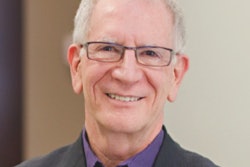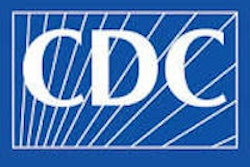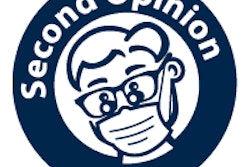
I write this article so that my profession can take an introspective look at what exactly we are doing. I've practiced since 2002, mainly in pediatric dentistry, but before dental school I studied public health.
Public health is a focus that is unbiased, as the discipline forces us to use all the available tools, such as epidemiology and biostatistics, in combination to improve health through evidence. The last word is the key, as without evidence we are just practicing blindly, throwing darts to try to hit a bull's eye.
 Jason P. Hirsch, DMD, MPH.
Jason P. Hirsch, DMD, MPH.I understand the word "practice" can mean many things, but part of that word means identifying what is working and what is not. Then we must use those findings and adapt to those insights. After practicing for many years doing the things I was taught, from dental school, residency, and the state board exams, I realized that there is something missing in dentistry.
My public health training exposed me to other fields of healthcare and how those fields analyzed data, applied that data, and changed so that the very best care could be identified and also delivered to patients. Dentistry is not doing that at the practitioner level, because practitioners are not trained how to read critical information, discern bias from fact, and realize that what they were taught in dental school was wrong.
The industry of dentistry is driving care rather than the dentists driving industry. The procedures and rationales of dentistry have not changed since G.V. Black created cavity preparations more than 100 years ago.
The American Dental Association (ADA), which is the apex of the pyramid of our industry, is attempting to do just this. The ADA recently launched the Center for Evidence-Based Dentistry (EBD) with a website that's accessible to anyone. Yet most colleagues have no idea this website exists.
Data brief definitions
The website features data that are meta-analyzed and only published if the data are unbiased. Meta-analyzed unbiased data are the highest form of evidence; while it is not impossible to refute, it would be a monumental task. When given enough time, data collection affords us the ability to draw conclusions from meta-analysis. Therefore, the EBD data, which go back more than 50 years, are difficult to challenge.
Let's look at the recent publication of data that weren't part of a meta-analysis to better understand where I am coming from and the confusion that is being perpetrated on both practitioners and the public.
This event was reporting from the U.S. Center for Disease Control and Prevention's (CDC) National Center for Health Statistics data brief, titled "Dental Caries and Sealant Prevalence in Children and Adolescents in the United States, 2011-2012." The study highlighted the shift of dental disease from young children to adolescents. Instead of saying how the disease of tooth decay is manifesting itself later in life, the authors want us to believe that treatments not being utilized are the reason for this shift.
The first event in the data brief was highlighting the prevalence and the shift of dental disease from young children (37%) to adolescents (58%). The CDC also reported the prevalence of sealants (40%). From these statistics, the conclusion I drew is that the treatments are not stopping dental decay from rising. It's impossible for our profession to drill our way out of this bacterial problem in theory and practice.
“As professionals, we should be asking industry to provide us with better medicines to treat bad biofilms.”
As professionals, we should be asking industry to provide us with better medicines to treat bad biofilms. We need insurance companies to provide us more coding for managing caries as a disease that lasts a lifetime, not one that can be cut away and forgotten about. We need to be asking the ADA to drive insurance to pay us for the evidence system of more professional care. The six-month recall system is not founded in evidence; what is found in the evidence is that recall systems should be based on risk.
Perception of the procedures needs changing, such as no longer wasting money on pumice prophylaxis. We need to get the insurance industry to take a vested interest in better dental health based on evidence. The sequelae of bad dental health are not being effectively managed by this profession. It's a cycle of recare that leads to edentulousness.
Why is this happening? My best reasoning was confirmed when the government released the report. The people in charge of disease control in this country don't know the basics of the disease, and this spreads down the chain from the CDC to the educators to the state boards to the schools to, finally, the practitioners.
The CDC has its definitions of dental disease conflated and confused (taken from page 6 of the data brief):
- Untreated dental caries: Dental cavities (tooth decay) that have not received appropriate treatment.
- Dental caries: Having a tooth appropriately treated for tooth decay or having untreated decay present.
The CDC scientists cooked the lexicon in an attempt to continue to confuse educators, practitioners, and the public -- possibly even themselves? Let me explain. The CDC scientists believe, and want you to believe, that untreated caries and cavities are the same thing. They are not even close.
The CDC wants you to believe that caries are cavities. Caries is the biofilm cause and cavities are the symptoms of that disease. You cannot have symptoms of a disease/illness be the same thing as the disease/illness. This is basic medicine 101. With a common cold, treatments address the symptoms, such as a runny nose, but we do not have a treatment for the cold itself. Dentistry and its treatments are akin to this. We treat the symptoms, the cavities, but we have no treatments for the cause, the biofilms. This is what keeps patients in a cycle of tooth decay. Ineffective treatments for the symptoms, plastic fillings, and nonexistent treatments or cures for the cause. Hygiene by patients that is unsupervised is documented as having no positive effect.
The CDC definition is that a treated tooth and an untreated tooth are the same. So in its definition, a treated tooth still has the disease, which is correct, except they may be using the word untreated to mean that we can treat our way to less tooth decay? When you read the definition again you will see that dental caries is having untreated decay, except that having untreated decay is not the same as receiving appropriate care. I'm confused, you are confused, and so are the writers of this report and the people that taught them. What treatment is any good that is expensive, potentially painful, requires complete cooperation, is technique-sensitive, and still leaves the tooth diseased according to the CDC after completion? What are we doing?
According to the CDC, everyone has caries post-treatment. If I had tuberculosis and received appropriate treatment (I'm using CDC rationale), I would not have tuberculosis by diagnosis postillness. If it became apparent that the treatments are not working because people still had tuberculosis after their treatment, allopathic medicine would use the data to figure out the problem and find a better solution. Cancer used to be surgery and chemotherapy, but now we are seeing cures for cancers for the first time. But for dentistry, it's been 100 years since Black and we still have a growing problem. Do you think it's time for a change?
If we were using the evidence in a standardized manner, we would be providing the highest standard of care in the world. Currently, we are not. We give practitioners carte blanche to treat caries with no standardization system, state board exams that license practitioners based on treating noncavitated teeth, and schools educating to those state licensing exams. We are in a death spiral with corporate dentistry applying these flawed rationales to the general population. We then use this flawed rationale and call it access-to-care issues to see if we can get higher reimbursements for the same failed rationale.
If we had insurance companies and the government actually putting their money behind wellness, and not sickness, as their only means to raise premiums, we would not have an access problem. Supervising tooth decay with palliative treatments of sealants, increased fluoride varnish treatments, and new silver fluorides is perfectly acceptable medical management of a bacterial disease. Doing unnecessary procedures not based on evidence that is expensive, time-consuming, potentially traumatic, and not treating the cause is taking on more risk than necessary.
This CDC report is but a snapshot of time measuring our treatments against caries. If the report cannot get its understanding straight of the definitions that define the report, then what is the report worth? If the authors cannot properly define the disease, nor can they discern the symptoms from the cause, then what are we doing with treatments that are supposed to address the disease? It goes back to my initial statement: What are we doing?
Shifting disease from young children to teenagers to adults is not an effective strategy. Its kicking the can down the road. Not one positive thing emerged from the CDC data brief, with the manipulation of the lexicon the most troublesome issue. As transparency evolves about these issues, the public trust has to be won through evidence-based standardized care. There is no opinion about dental disease, just facts based on medicine and biology.
We need a diagnosis system, classification system, and utilization and payor system for effective noninvasive treatments for dental disease before any invasive tooth procedures commence. This rationale will fix access-to-care issues, fix reimbursement to align with wellness, and put our profession back on track as a medical specialty within allopathic medicine. Switching the degree from Doctor of Dental Surgery (DDS) to Doctor of Dental Medicine (DMD) without switching the rationale and delivery system has gotten us to this point. It's up to us to drive care toward the free market and give patients what they want -- better care through evidence, not care driven from flawed government reports. It's time to change.
Jason P. Hirsch, DMD, MPH, is a pediatric dentist and public health specialist. He has been in practice in South Florida since 2002 and is currently building a new state-of-the-art medical management of caries and evidence-based orthodontic practice in Boca Raton, FL.
The comments and observations expressed herein do not necessarily reflect the opinions of DrBicuspid.com, nor should they be construed as an endorsement or admonishment of any particular idea, vendor, or organization.



















